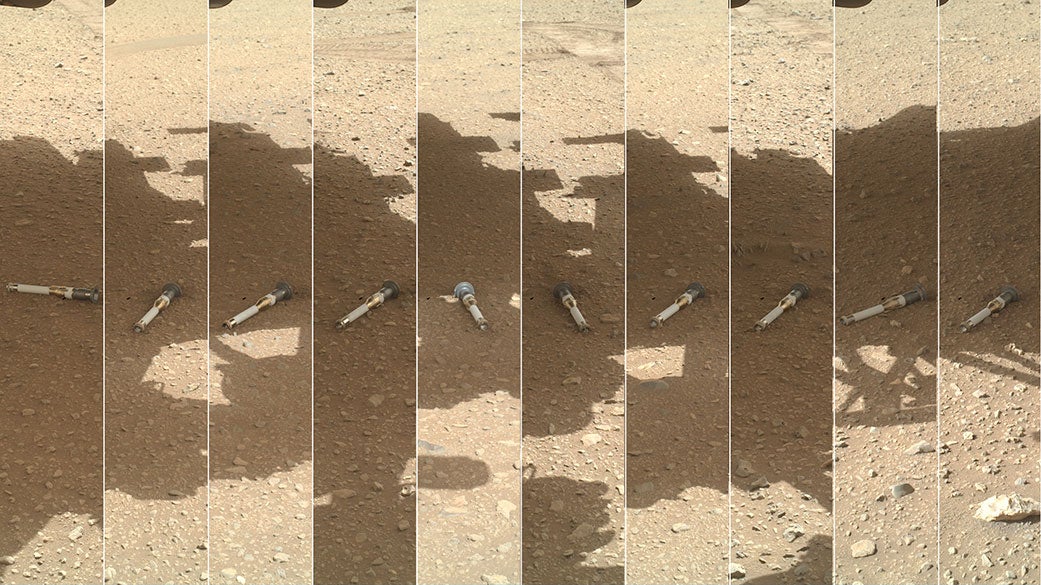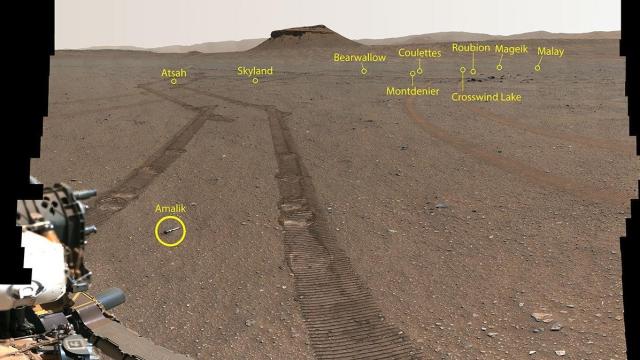NASA’s Perseverance rover has spent its two years on Mars imaging the planet’s surface and collecting rock samples that will, should all go well, be brought to Earth in the early 2030s.
The rover collected samples of Martian regolith (rocks and dust) as well as the planet’s atmosphere, which it stored in its sample cache. But it also collected 10 sample tubes, which it left sitting on the Martian surface as backups in case disaster strikes and the samples aboard Perseverance become inaccessible.
Now, the rover has snapped 368 images of its path from the 10 deposited backup samples. The NASA team stitched those images into a single sweeping shot of the Martian surface now studded with sample tubes.
The image shows the scene as it appeared on January 31, 2023, and is adjusted to show the Martian surface as it would appear to the human eye. Perseverance completed its sample depot three days earlier, and the image was taken a year to the day since the first sample was picked up. NASA made a handy annotated version of the image to indicate the location of each sample.

The depot is distributed across Three Forks, a place where an ancient river forked into a delta that fed into Jezero Crater, which is thought to have been filled with water billions of years ago. In Perseverance’s years on Mars, it has wended its way across Jezero’s western rim and is now climbing up out of the crater basin.
Besides keying researchers into the planetary science of Mars — how the composition of its regolith varies and how the planet has changed over time — the Perseverance mission is looking for astrobiological clues. Researchers hope to find ancient microbial biomarkers, which would show that the now-hostile world once held life.
The Mars Sample Return mission is now slated for no earlier than 2033, meaning we’ll have to wait at least a decade for more spacecraft to get to Mars, retrieve the samples, and slog them the millions of miles to Earth.
Until then, we’ll have to appreciate the scientific discoveries made by Perseverance and Mars researchers in the intervening years. And of course, the remarkable imagery of the Red Planet.
More: Curiosity Rover Spots Clear Evidence of Ancient Water on Mars
